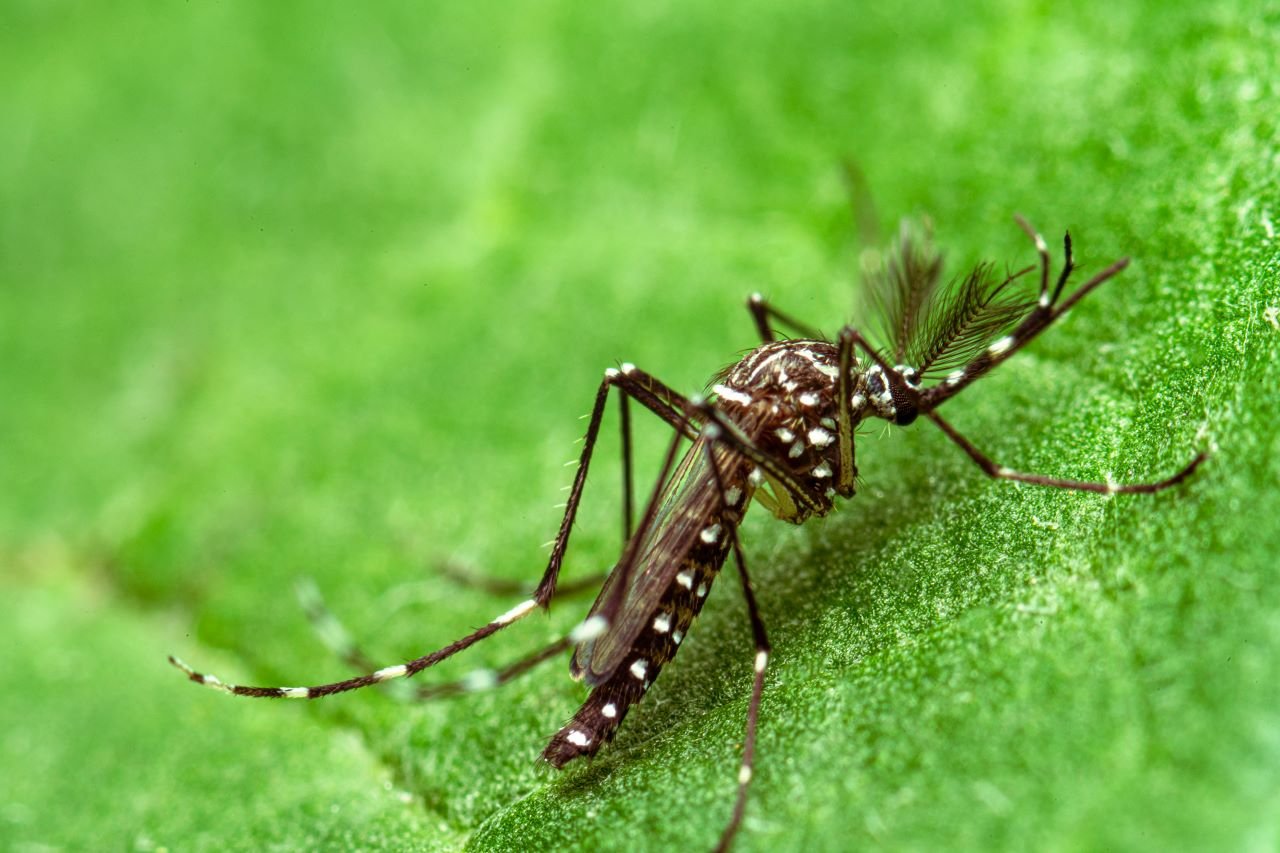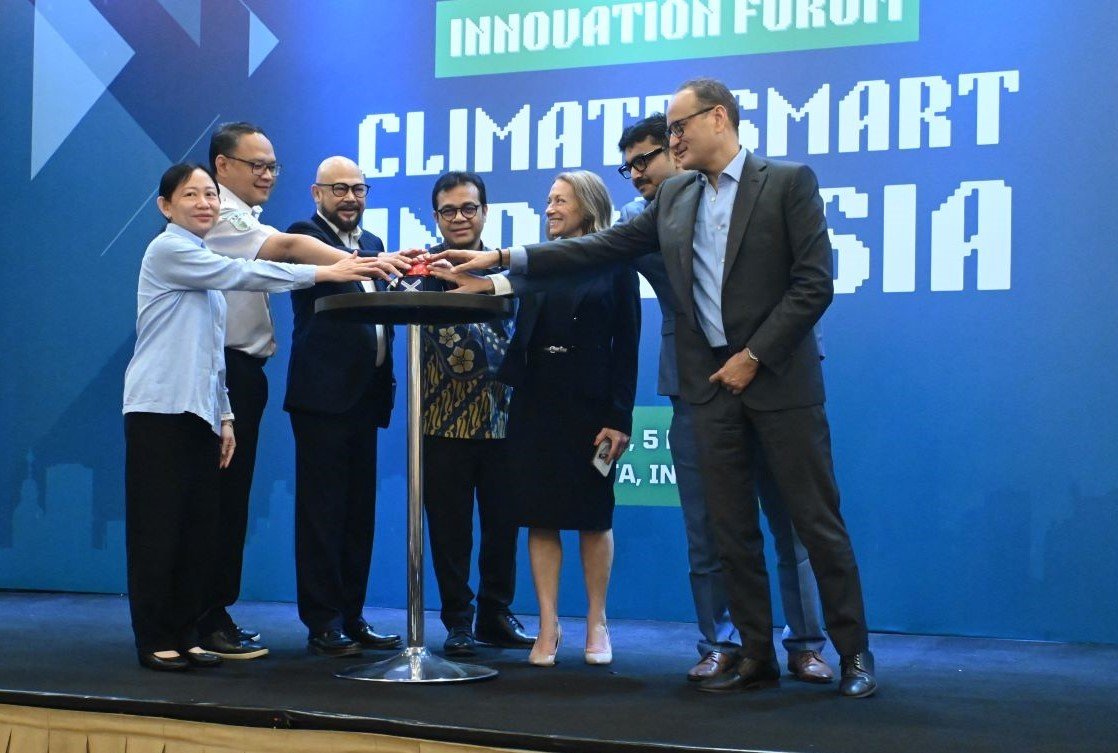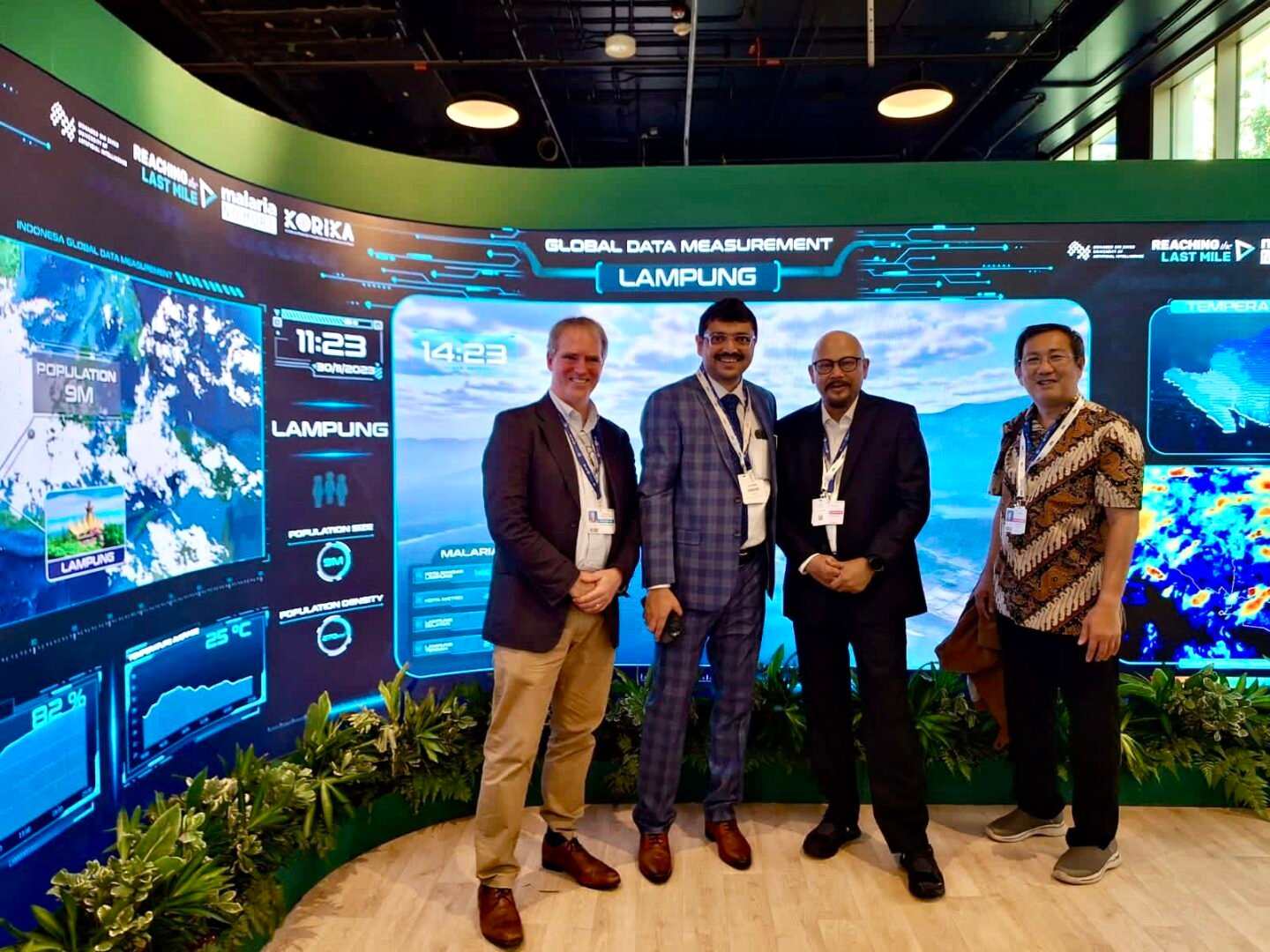An interview with Dr. Kaushik Sarkar, Institute for Health Modeling and Climate Solutions (IMACS)
The Institute for Health Modeling and Climate Solutions (IMACS) is an AI-first global center of excellence with the mission to empower the world’s most climate-vulnerable countries with the tools, data, and expertise needed to predict, prevent, and respond to climate-driven health challenges. The institute was established with support from the Reaching the Last Mile. Dr. Kaushik Sarkar, its founding leader, oversees the institute’s strategy, innovation, and global initiatives. With over two decades of experience in computational epidemiology, public health and AI, he is known for creating and scaling new ventures at the intersection of science, technology, and impact. In this interview, he explores how climate change is altering disease landscapes, the promise of AI-driven forecasting, and the importance of proactive, predictive, and climate-integrated responses.

Aedes aegypti mosquito, a primary vector of dengue, zika, and yellow fever. These mosquitoes thrive in urban environments. Photograph: Centers for Disease Control and Prevention (CDC)
How is climate change reshaping the patterns of mosquito-borne diseases globally?
Mosquito-borne diseases are among the most climate-sensitive health threats. Climate change is not only shifting where these diseases appear, but also when, how often, and how intensely outbreaks strike. Mosquitoes are highly sensitive to temperature, humidity, rainfall, and other climate variables. Even a small increase in global temperature can alter their breeding cycles, biting rates, and survival windows. With climate change, areas once too cool or dry for mosquitoes, such as parts of the Himalayas, southern Europe, or high-altitude regions of Africa, are now at risk for diseases like malaria, dengue, and chikungunya. Climate variability is also disrupting the seasonal predictability of these diseases. Erratic monsoon patterns, more frequent heatwaves, and extreme weather events are throwing public health systems off balance. So, outbreaks aren’t just growing; they are becoming harder to anticipate and manage with the toolbox we have. We are now in an era of what I call “climate-amplified epidemics,” which demands a new class of tools. This is where artificial intelligence, satellite data, and climate-integrated forecasting come in. Simply put: to prevent mosquito-borne diseases in this new climate reality, you can’t just look at humans and mosquitoes. You also need to look at the sky, the soil, and the sensors and rely on data.
What does this mean for vector control strategies and how can we prevent future outbreaks and epidemics?
I’m not an entomologist or a malaria specialist, so I can’t prescribe the most appropriate mosquito control technologies. But from where I stand – someone shaping data-driven public systems, I can see a clear need to revisit and strengthen current vector control strategies. Traditionally, countries have often waited for outbreaks to flare up and then scrambled to respond as a reactive measure. With climate disruption altering disease dynamics, we cannot afford to be a step behind. However, moving from reactive to proactive is tricky when resources are finite and we don’t know where to focus for prevention. Casting the net too wide means coming up with unsustainable cost curves. What we need now is a pivot from blanket approaches to precision programming, using predictive climate and environmental signals to plan dynamically and get ahead of outbreaks. That means flagging hotspots based on temperature, rainfall, and land-use patterns before cases appear on clinical radars. You zoom in, deploy resources fast, and pull out once the risk drops. During one of IMACS’s earliest programs, we showed how precision programming with AI could reduce malaria by over 60% in two million population. We need hyper-local, time-bound, resource-smart strategies that work in sync. Additionally, vector control cannot operate in isolation anymore. It must plug into the same stack as urban planning, climatology, and emergency response. Climate and urban dynamics are lead indicators. The future of vector control must be proactive, predictive, and climate or environment-integrated.

ClimateSmart Indonesia: An example of IMACS’s country-level initiative to integrate climate-smart decision-making into national public health systems through a multisectoral approach. Photograph: IMACS
Why is modeling important to understand complex issues – such as the intersection between health and climate change – and what are the main opportunities and challenges that come with relying on modeling for decision-making?
When we are dealing with something as complex and nonlinear as the health–climate nexus, whether it’s vector-borne diseases or broader systemic risks, modeling is key. You are not looking at a single disease or weather event; you are dealing with cascading systems – temperature shifts influence mosquito habitats, changing rainfall patterns alter transmission windows, and urban heat amplifies vulnerability. And none of these happen in isolation. It’s like aiming at a single target, except the target keeps moving. Modeling helps make sense of this chaos. It connects the dots across time, geography, and sectors, and gives policymakers what I call a “time machine” – the ability to fast-forward into possible futures, whether that’s outbreak trajectories, intervention impacts, or resource needs. That foresight allows them to act before crises escalate. Of course, there are challenges. Models are just data plus algorithms, so they are only as good as their inputs and assumptions. Climate and health data often sit in silos, in incompatible formats, and in many low- and middle-income countries, health data isn’t updated in real time. There’s also a trust gap – if models are too technical or opaque, decision-makers can’t “see under the hood,” which makes them less likely to rely on them. That’s why at IMACS, one of our top priorities is transparency and usability. A health official doesn’t need to understand the mechanics of machine learning or interpret a complex chart – they need clear answers on when, where, and how to act. Data storytelling is just as important as the modeling itself. The bottom line is that modeling is a leadership tool. Done right – with reliable inputs, a single source of truth, and clear, actionable outputs – it can help countries leapfrog from reactive systems and build future-ready public health systems.
Can you tell us more about the Institute for Health Modeling and Climate Solutions (IMACS)? What are your top priorities in the next five years?
IMACS is something I’m proud to have shaped from the ground up. If you scan today’s risk landscape, climate volatility is not just creeping in – it’s rewiring the entire global health ecosystem. Many diseases are worsening. Add to that the growing systemic strains on manufacturing, supply chains, and last-mile delivery. What we are seeing is the healthcare value chain under pressure at every node. One reason is that health and climate systems have spoken past each other for decades, missing each other’s signals. IMACS exists to close that gap, purpose-built to inject combined health and environmental intelligence into every layer of the health stack. We use frontier models, frictionless data pipelines, and edge-to-core analytics to turn fragmented data into foresight, and foresight into actionable intelligence. Our recent models are lean, fast, and built to scale. With such tools in hand, we work shoulder to shoulder with governments, funders, and private-sector leaders to integrate scalable AI solutions directly into national infrastructure and critical choke points in the value chain. That means we are not just developing and shipping AI solutions – we are standing up institutions by training in-house data and AI talent in Ministries of Health, codifying model governance, and shifting the equation from “Data and AI for health” to “Data and AI by health systems”. Over the next five years, we are focused on three priorities:
- Structuring our central data and analytics hub built on an AI foundation model funded by the Patrick J. McGovern Foundation – it will serve as the intelligence backbone for at least ten high-stakes decision areas at the climate-health nexus;
- Doubling down on data governance and sovereign AI capacity at the climate–health nexus, by teaming up with partners like The Task Force for Global Health, Pathfinder, and other global health organizations, and working closely with multilateral donors, like The Global Fund;
- And pushing the edge of frontier innovation by leveraging generative AI and Earth observation data to stay ahead of the curve. One exciting project with the University of Maryland, recently greenlit for NASA funding, will integrate next-generation Landsat data into our neural networks to deliver predictive insights for national platforms combating diseases like malaria and dengue.
In short, IMACS is where AI meets climate meets public systems, and we are ready for the next big push.

At COP28, IMACS, MBZUAI, and KORIKA launched an AI platform that uses virtual reality to project future weather scenarios and predict hotspots of malaria and other climate-sensitive diseases. Photograph: IMACS
India has made significant progress in malaria control. What do you see as the biggest remaining challenges to address?
India has done a phenomenal job in malaria control, and I had the privilege of working closely with the National Vector Borne Disease Control Programme during a critical phase of that journey. But India’s malaria landscape is fundamentally changing. We are no longer dealing with national-level epidemics; we are facing fragmented microsurges. This is what I call a high-resolution challenge. The core issue is not capacity or commitment. It’s complexity: different vectors, behaviours, and infrastructure gaps in tribal forest belts, which look nothing like the drivers of urban outbreaks in cities like Mumbai or Kolkata. The real test is tailoring interventions across this diversity without losing cohesion at the national level, which requires hyper-local intelligence. The way data and information is currently gathered also needs to step up so that India can shift from reactive response to anticipatory execution. There’s also a strategic opportunity for other sectors to contribute. Malaria control can no longer be confined to the Health Ministry alone. Infrastructure, environment, housing, water, and labor patterns all intersect with malaria risk. If India bakes that intersectoral architecture into its malaria endgame — something few countries have managed at scale – it can not only eliminate malaria, but build a replicable governance model for other complex health and development challenges. In summary, the challenge is multidimensional, but so is the opportunity. India has the talent, tech infrastructure, and political capital to lead this next chapter. The key now is to reframe malaria not just as a health burden to fight, but as a systems problem to outmanoeuvre.
With multiple crises converging – climate change, biodiversity loss, water and food insecurity, and health risks – why is it important to innovate to keep pace with these challenges?
We are entering an era of “polycrises”, where risks converge and cascade. Climate change isn’t just a temperature problem – it disrupts agriculture, displaces populations, shifts disease patterns, and puts strain on already fragile health systems. Add biodiversity loss, water insecurity, and economic volatility, and then you are looking at systemic risk on a planetary scale. In this environment, incremental change won’t suffice. Systems innovation is essential.
Our traditional decision-making infrastructure wasn’t built for “polycrises”– level complexity: most public systems still rely on backward-facing data, sectoral silos, and linear planning cycles. That’s a blueprint for being perpetually behind the curve. So the bottom line is, Innovation isn’t optional – it’s essential for survival, in the sense of staying economically resilient, politically stable, and socially cohesive. And to have that innovation data and digital technologies are not optional– they are now table stakes, enabling us to ingest complexity, simulate cascading effects, and prototype solutions before crises hit.
What is your message this World Mosquito Day for the global health community?
On World Mosquito Day, my message to the global health community is, it’s not just a moment to celebrate a public health milestone from the past; it’s a systems wake-up call. Mosquito-borne diseases don’t just threaten lives – they hit productivity, destabilize supply chains, and drag down economic momentum, causing multi-billion dollar losses. The answer is not more reactive spending. We need smarter infrastructure, digital tools, precision urban design, and next-generation biological control working together like an operating system. My mantra is simple: “Prevent it like Ethan Hunt.” Just as in Mission Impossible, the goal is to try and stop crises before they happen, and that’s exactly the mindset we need for climate-aggravated vector-borne diseases.
